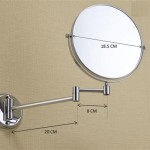How to Screen Mirror iPhone to Windows 8
Screen mirroring allows users to display the content of their iPhone screen on a larger display, such as a Windows 8 computer. This can be useful for presentations, watching videos, playing games, or simply sharing content with others. While Windows 8 doesn't offer native iPhone screen mirroring support, several third-party applications and hardware solutions facilitate this functionality.
This article will explore several methods for screen mirroring an iPhone to a Windows 8 machine, outlining the necessary steps and considerations for each.
Using Third-Party Software
Numerous third-party applications enable iPhone screen mirroring to Windows 8. Many utilize AirPlay, Apple's proprietary screen mirroring protocol, requiring an intermediary receiver application on the Windows 8 computer. These applications typically function by creating a virtual AirPlay receiver on the Windows machine, allowing the iPhone to connect and stream its display.
Here's a general outline of how this process works:
1.
Download and Install:
Select a reputable third-party mirroring application from a trusted source. Research and compare features, such as latency, video quality, and supported iOS versions, before installation.2.
Network Configuration:
Ensure both the iPhone and the Windows 8 computer are connected to the same Wi-Fi network. This shared network connection is crucial for AirPlay functionality.3.
Launch Application:
Open the mirroring application on the Windows 8 computer. The application will typically display connection instructions and may require some initial setup.4.
Initiate Mirroring on iPhone:
On the iPhone, access the Control Center by swiping up from the bottom of the screen (on older iPhones) or swiping down from the top right corner (on newer iPhones with a notch). Tap the "Screen Mirroring" or "AirPlay" icon.5.
Select Receiver:
A list of available AirPlay receivers will appear. Select the name of the mirroring application running on the Windows 8 computer.6.
Mirroring Begins:
The iPhone's screen content should now be mirrored on the Windows 8 computer's display.Users should research and choose the application that best suits their needs. Some popular choices include AirServer, Reflector, and LonelyScreen. Factors to consider include price, performance, features, and user reviews.
Using Hardware Solutions
An alternative to software solutions involves using hardware devices specifically designed for wireless screen mirroring. These devices typically connect to the Windows 8 computer via HDMI and create a wireless network the iPhone can connect to for mirroring. This method often provides a more stable and higher-quality mirroring experience, particularly for high-resolution content or gaming.
Here’s a generalized guide for using hardware screen mirroring solutions:
1.
Hardware Acquisition:
Purchase a compatible wireless mirroring device. Several options are available, each with varying features and price points. Ensure compatibility with both iPhone and Windows 8 systems.2.
Hardware Connection:
Connect the mirroring device to an available HDMI port on the Windows 8 computer and to a power source. Some devices may require additional software installation on the computer.3.
Network Connection:
The hardware device will create its own Wi-Fi network. Connect the iPhone to this network using the device's provided SSID and password.4.
Initiate Mirroring on iPhone:
Access the Control Center on the iPhone and tap the "Screen Mirroring" or "AirPlay" icon.5.
Select Receiver:
Choose the hardware mirroring device from the list of available AirPlay receivers.6.
Mirroring Commences:
The iPhone’s display should now be mirrored to the Windows 8 computer through the connected hardware device.Examples of hardware solutions include Apple TV (though configuration might be different on Windows 8), and various third-party wireless display adapters.
Troubleshooting Potential Issues
Several factors can affect the performance and reliability of screen mirroring. Here are some troubleshooting steps for common issues:
Network Connectivity:
Ensure both the iPhone and the Windows 8 computer (or the mirroring hardware) are connected to the same network and have a stable internet connection. Restarting the router can sometimes resolve connectivity problems.Firewall Settings:
Windows Firewall or other security software might block the connection. Temporarily disabling the firewall or adding an exception for the mirroring application can help diagnose if it's the source of the issue.Outdated Software:
Ensure both the mirroring application (if using software) and the iPhone's iOS are up-to-date. Outdated software can cause compatibility problems and hinder performance.Driver Updates:
For hardware solutions, ensure the drivers for the device are installed and updated on the Windows 8 machine. Outdated drivers can lead to connectivity and performance issues.Hardware Compatibility:
Verify that the chosen hardware mirroring device is compatible with both the iPhone model and the Windows 8 operating system.By carefully considering the available software and hardware options, and following the appropriate steps, users can successfully mirror their iPhone screen to a Windows 8 computer for various applications.

How To Mirror Iphone Windows Pc Laptop Mac Full Guide

How To Mirror Your Iphone Screen On A Computer Pcmag

How To Screen Mirror Iphone Or Ipad Windows Pc Osxdaily

5 Minutes Screen Mirroring Iphone Ipad To Pc In 2024

5 Minutes Screen Mirroring Iphone Ipad To Pc In 2024

How To Mirror Iphone Windows Pc Laptop Mac Full Guide

4 Ways To Screen Mirror An Iphone Or Ipad Windows

How To Mirror Iphone Ipad Windows 10 In 5 Methods

8 Best Ways To Control Iphone From Pc 2024

Tested How To Mirror Iphone Screen Pc Letsview








